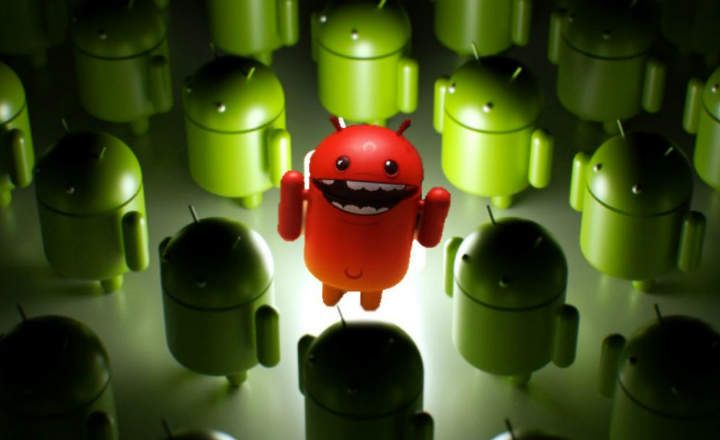
When they announced that Dragon Ball would return to the small screen, 18 years after the last chapter of the disastrous and forgettable Dragon Ball GT, everyone took the news with some suspicion at first. After 2 films ("The Battle of the Gods" and "The Return of F") a little weak but really successful at the box office the idea of a continuation in the form of a television series began to hover in the air. Finally the rumor was confirmed, and not only that, but also Akira Toriyama himself would be behind the designs and scripts of the series (!).

After the expected initial hype, the series went deflating by leaps and bounds, mainly due to the poor drawing and disastrous animation used. For the first time, the entire series had been drawn and animated entirely by computer, using digital tablets instead of more artisanal methods, and the result left something to be desired. What would Dragon Ball Super be like if it were well drawn?
What many do not know is that a couple of weeks before the anime's premiere, on June 18, 2015, the manga version of DBS published by V Jump magazine also appeared on Japanese newsstands. Using arguments by Toriyama himself and with drawings by Toyotaro, the Dragon Ball Super manga is the true continuation in spirit and soul of Akira Toriyama's classic. Although the drawings do not reach the angelic perfection of the originals, they do come quite close, and serve as worthy successors to the printed myth.
 At times it seems that nothing has changed ...
At times it seems that nothing has changed ...Reading the manga can help to alleviate that bad body that the viewing of the television series leaves behind. This is Dragon Ball. This is what we should be seeing in full color and in motion. But make no mistake, after reading several numbers to the manga you begin to see the seams. Be careful, I am not saying that it is a bad comic, it is everything it should be and it manages to recover that feeling that everything is possible. The emotion. But for some reason it has that same plastic smell, a new one, that the anime gives off. A prefabricated.
Toyotaro is a mangaka who became famous for being the author of the fan-manga Dragon Ball AF, and was subsequently hired by Shueisha to draw the spin-off "Dragon Ball Heroes: Victory Mission ". It could be considered the logical successor of Akira Toriyama. And although he manages to imitate the style of the teacher in a commendable way you can still see that lack of forcefulness. Some of his figures show certain proportion problems, as in the case of Goku, who for some reason tends to be quite stubborn. Toyotaro also loses his hand a bit when he has to draw the lower area of Son Goku's trunk, lengthening it in an unnatural way.
 What happened to your head, Goku?
What happened to your head, Goku?Which does not happen, for example, with Vegeta, that is much better represented. To such an extent that in most cases it is impossible to differentiate it from the version of the original author himself. This is the Vegeta we all know. All the strokes of the mangaka deliver a very successful and credible version of the prince of the Saiyans.

Akira Toriyama used to draw some color pages every certain number, which Toyotaro discarded, having delivered no more than a couple of color illustrations in the numbers published to date. Which he tries to make up for with the use of plots, which, although at first glance might seem like something positive, in the end they end up weighing down the authenticity of the comic. Toriyama didn't like plots, and that's why he hardly used them. Here, seeing so much plot, we immediately realize that this is not papa Tori to pencils.
 Toriyama never used plots ...
Toriyama never used plots ...Another of the "hot" issues in the continuation of Dragon Ball Z is the humor that is used in the story. In the manga version, humor is much better integrated than in the anime, and it doesn't squeak so much, which in anime many times ends up taking us out of the same story, here it flows completely naturally. There are some moments that even border on genius, reminiscent of the craziest gags of Villa Pingüino.
 In scenes like this you can see the hand of Toriyama, the brand of the house
In scenes like this you can see the hand of Toriyama, the brand of the houseAs for the combat scenes, the first thing we see is that that feeling of shame from the anime disappears. Here Toyotaro has a lesson well learned, and he knows what it means to represent a good fight in the style of Dragon Ball. We can notice a certain evolution in the scale of power of the characters Regarding the Buu saga, in real combat the characters have evolved, and they have even learned the odd technique that we never see in the anime. But like that halo that runs through the entire manga, there is something that does not quite convince in terms of hand-to-hand combat.
 The manga makes us want to see these guys in action again
The manga makes us want to see these guys in action againAnd then there's the issue of whether or not Dragon Ball returns to its epic tone. At this point it is a bit difficult to decide, since although it has that rich, juicy aroma again, that they are going to tell us something that will surprise us, we still do not get to feel that feeling of nervousness, that something very bad is about to happen. Maybe it's hard to empathize with the characters, because it gives the feeling that everything is a game, and nobody is in real danger. That together with the more accentuated humor of this new journey, make Dragon Ball Super in general lose that epic tone that was breathed in the mother series. When Vegeta killed Piccolo on his first visit to earth, all the fans stood stiff in front of the television as they watched as the king of demons protected Son Gohan, the son of his greatest enemy, from the withering attack of the fearsome Saiyans. Something like that in DB Super would be unthinkable. The series does not create such environments.
 Toriyama has had the good idea to expand the mythology of DB
Toriyama has had the good idea to expand the mythology of DBOn the bright side, this new series of sagas are bringing new mythology to the world of Dragon Ball, which helps to expand possibilities and open new plot territories to deal with. 7 new dragon balls, the size of real planets and granting an infinite number of wishes. But above all, the structure of 13 universes, which opens the doors to new characters and possible confrontations that on the other hand would already be exhausted, help to remove from the reader's head the thought that everything has already been said. There are new worlds, and practically anything is possible. Only time will tell if the trip has been worth it.


